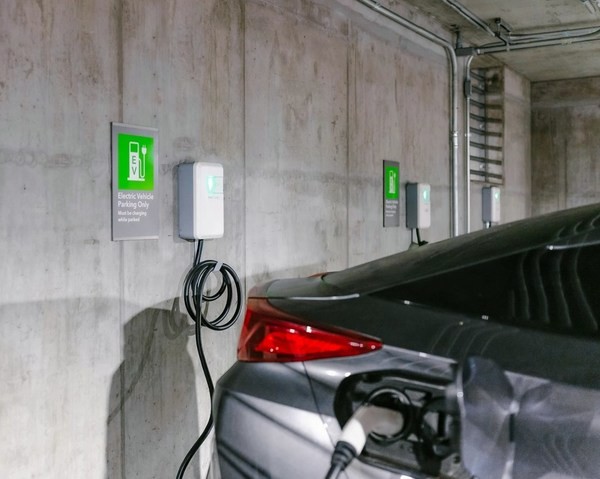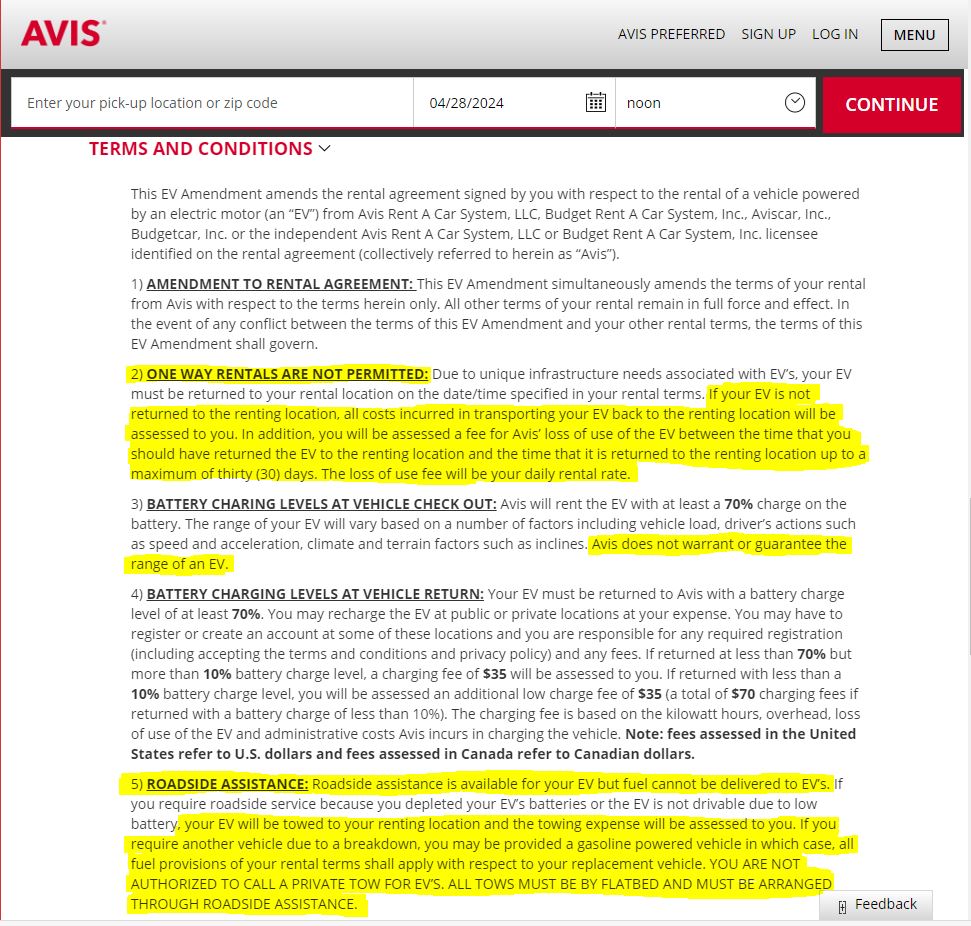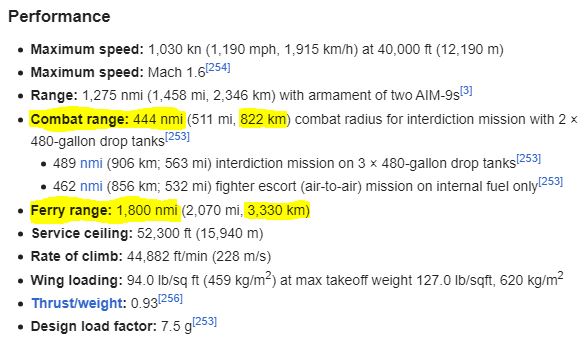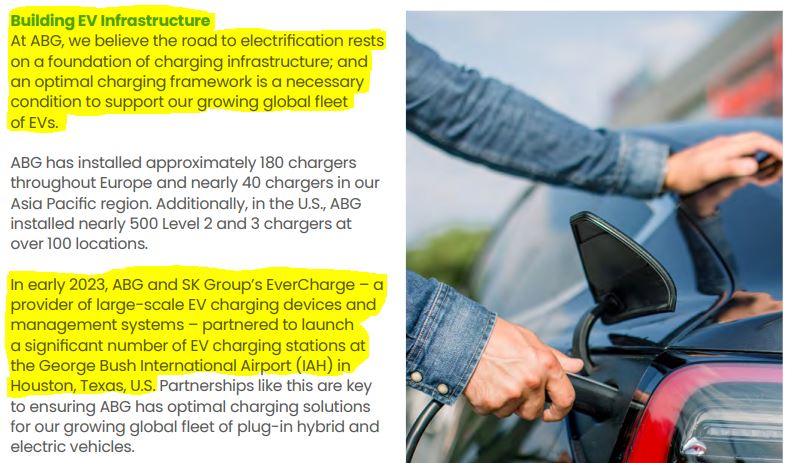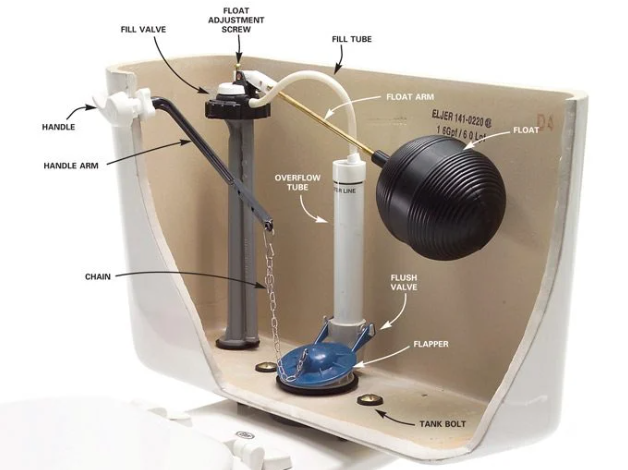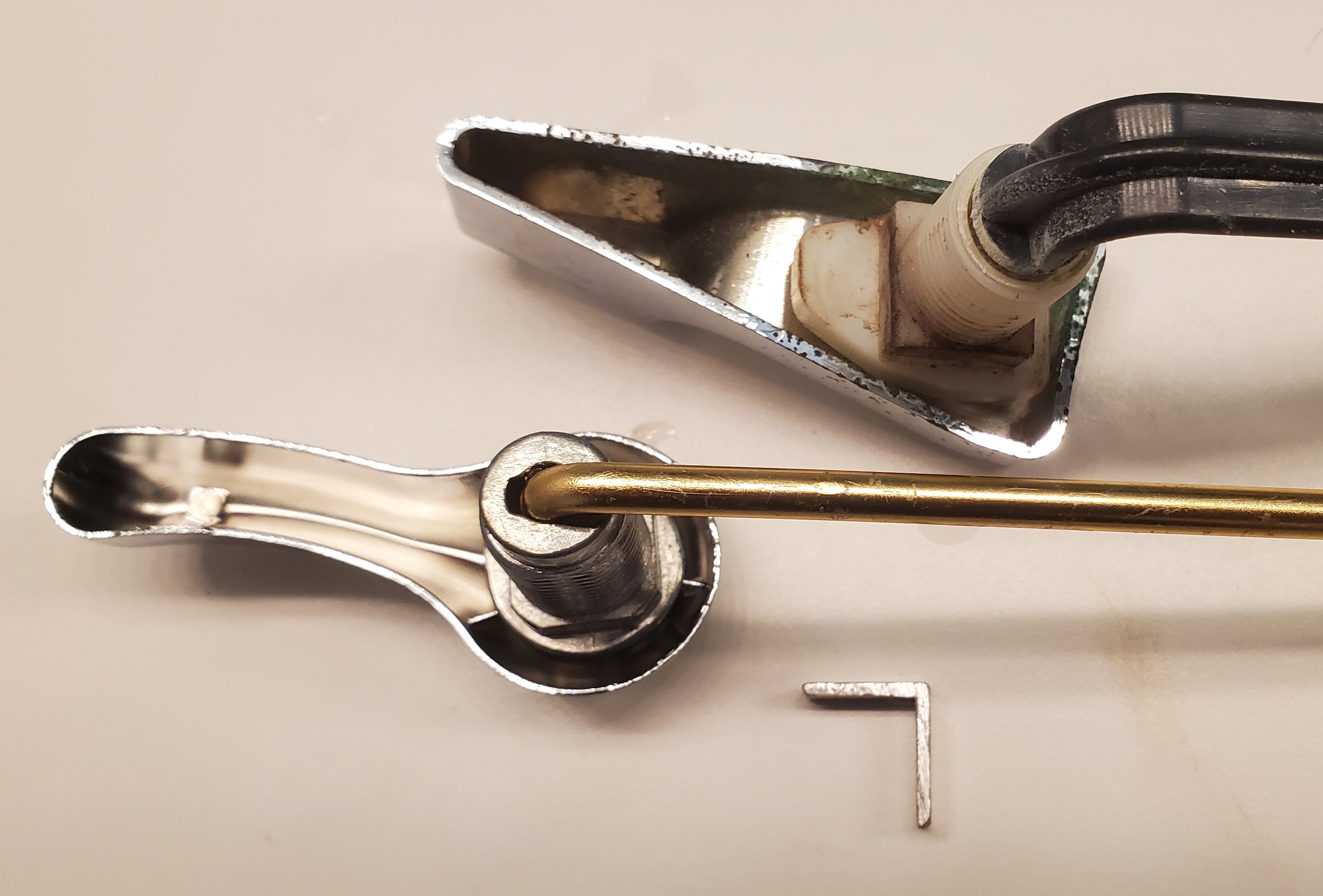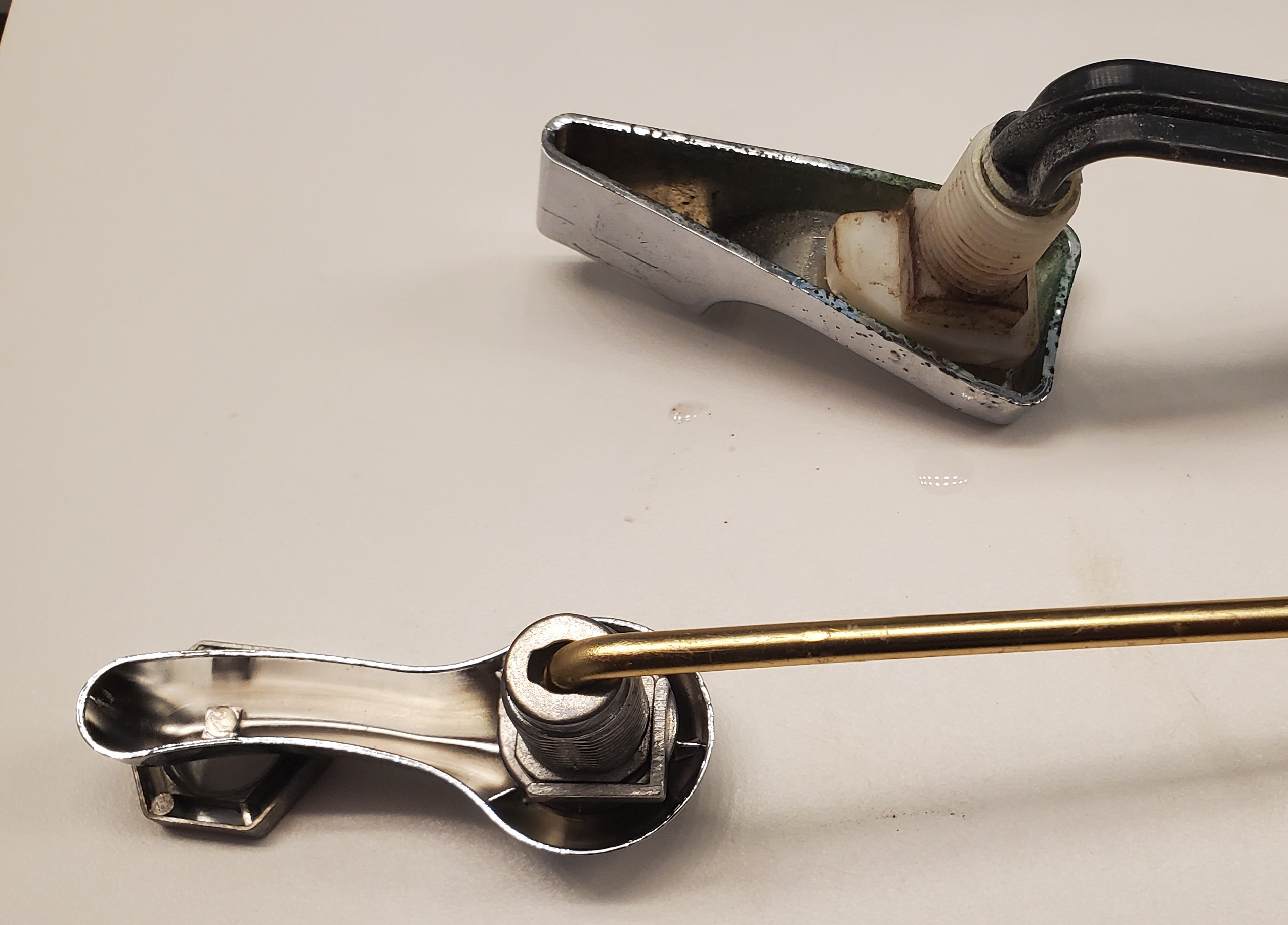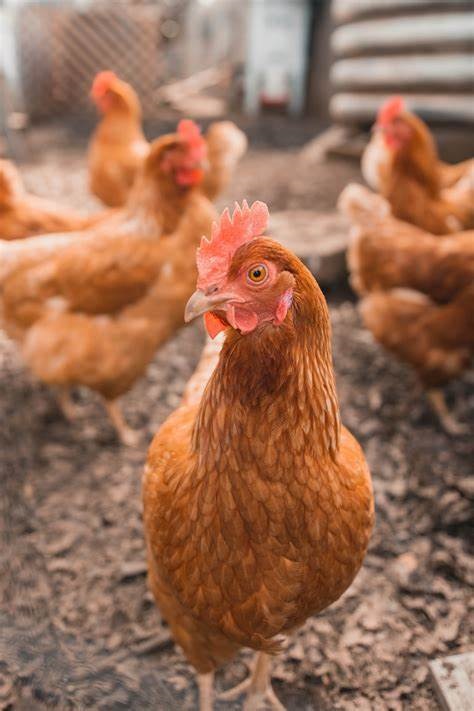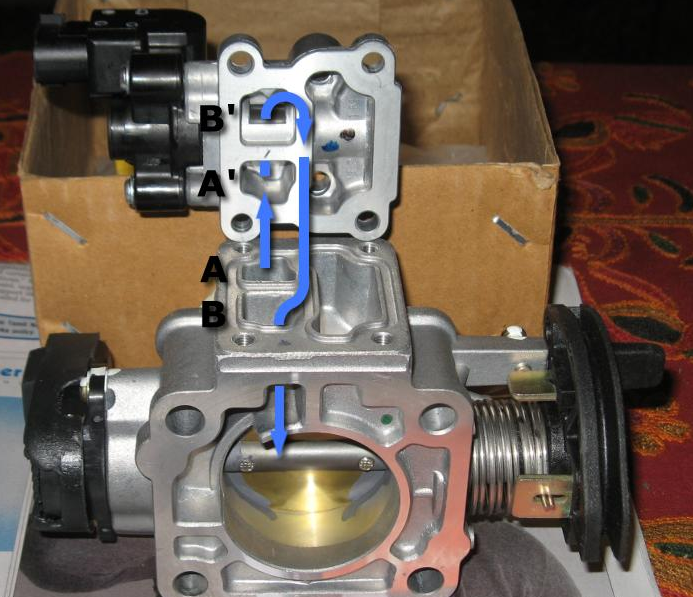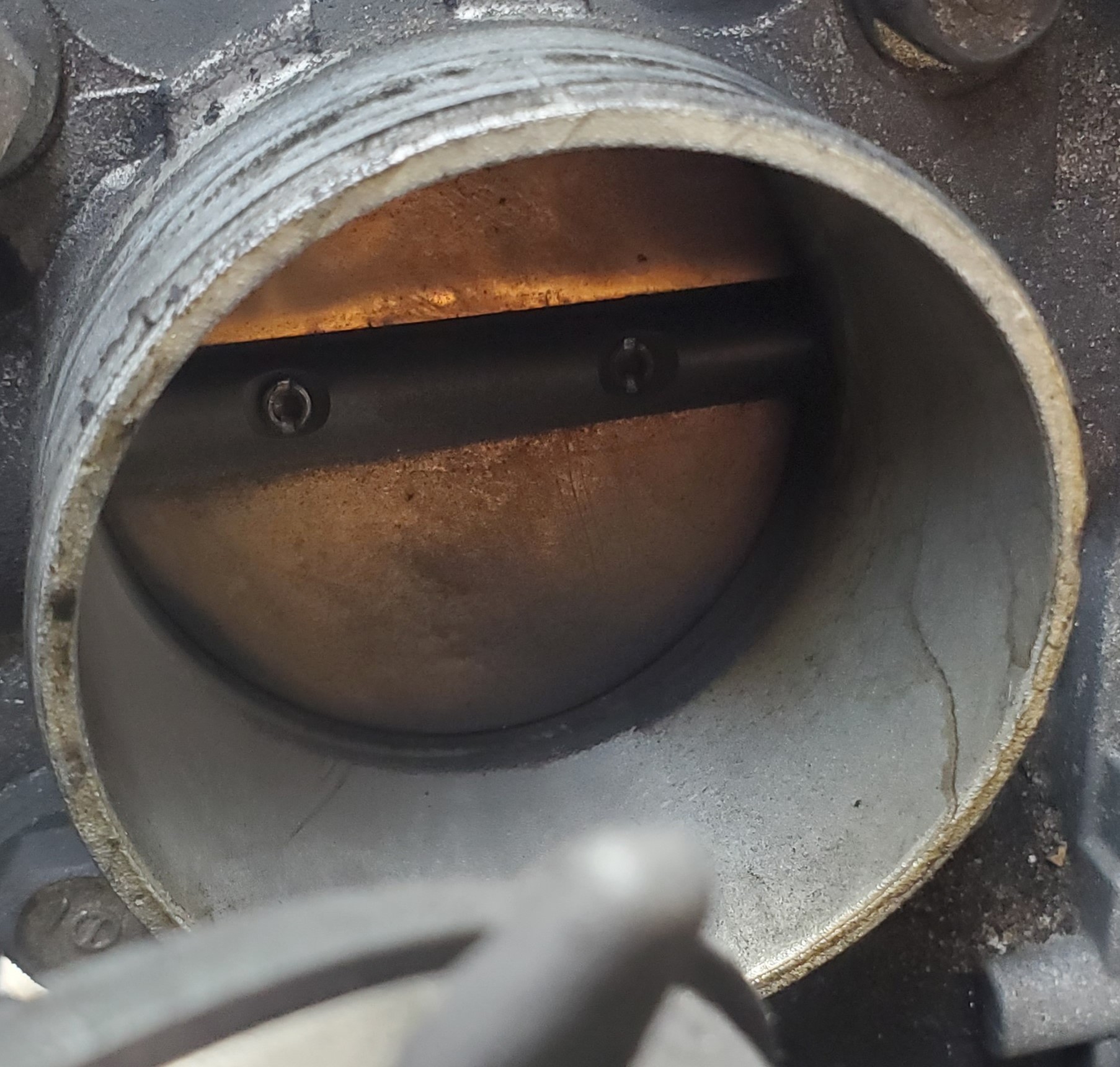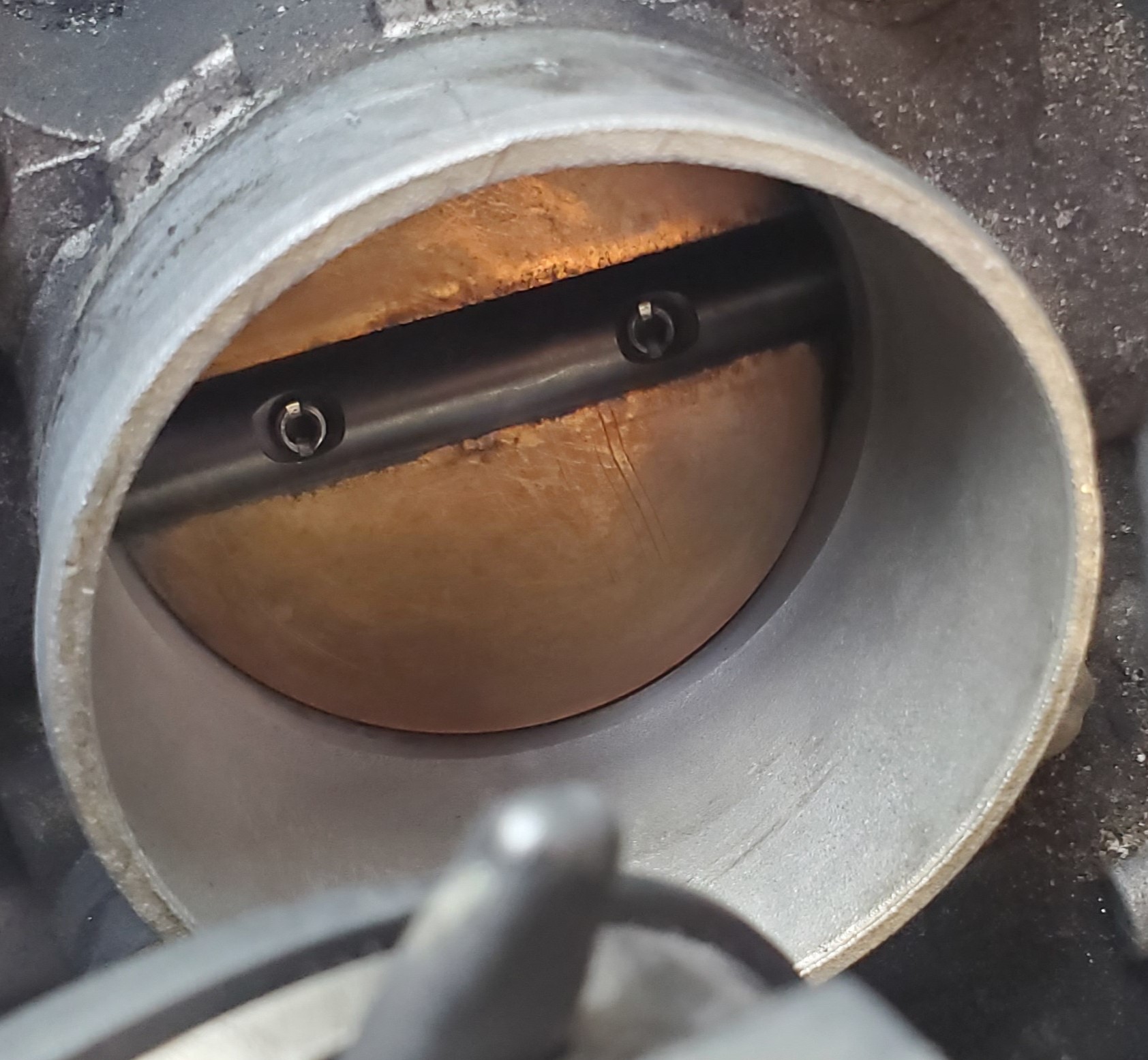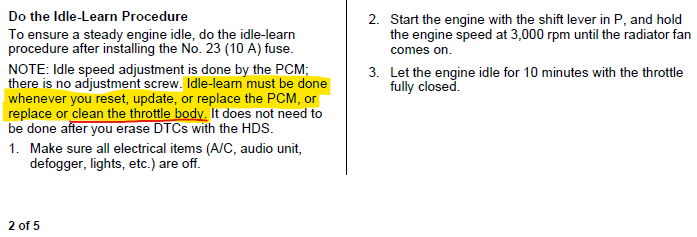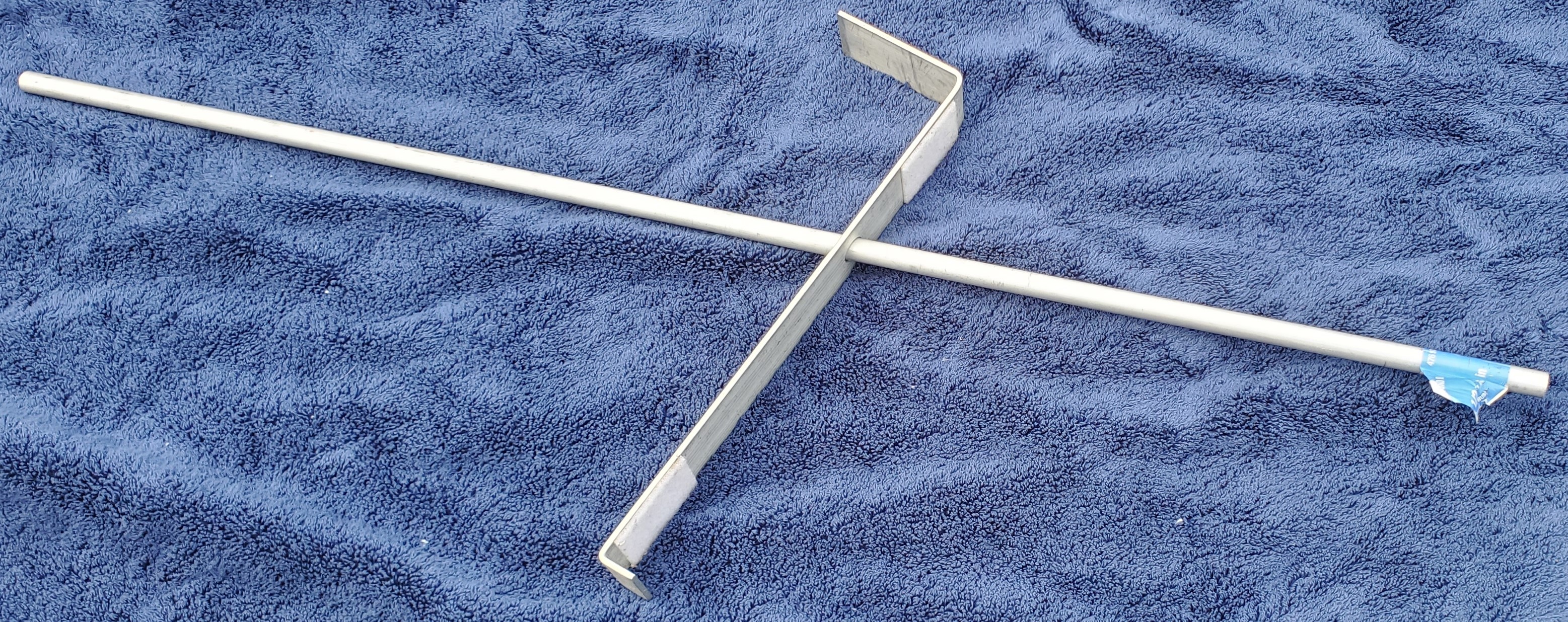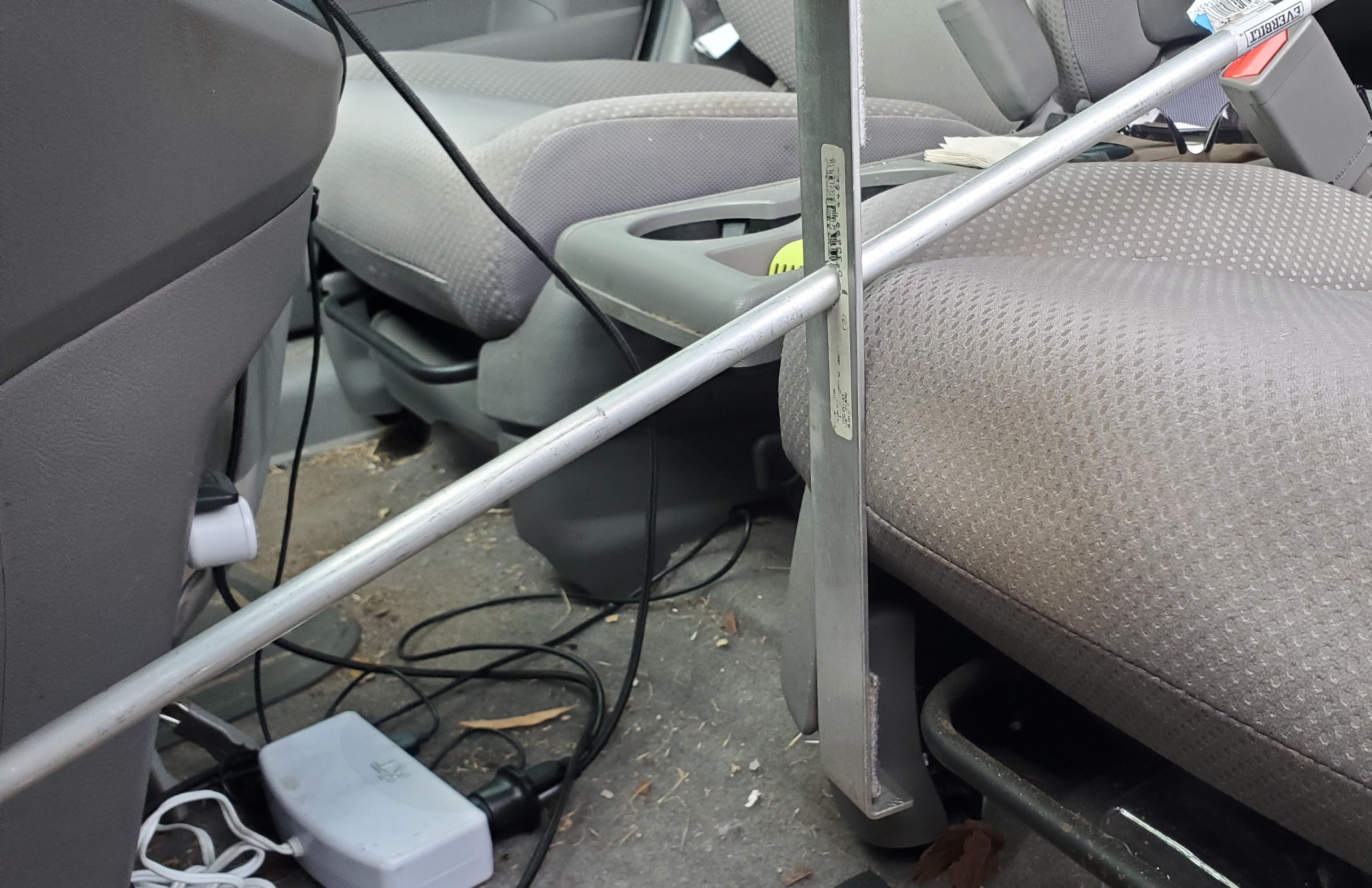Electric Vehicles Have Turned Out to Be High Priced Toys
EVs (Electric Vehicles) were advertised as a replacement for standard automobiles. And that's the entire problem.
We've Got To Get These EVs Out There!
EVs were advertised as the greatest thing since sliced bread, and many people believed that, until they had a chance to use one. That's where the rental car industry comes in.
I believe the rental car industry sparked the downfall of the EV market. The prohibitive cost of EVs combined with their limited range likely kept most people from purchasing them. But the rental car industry is where many people get to truly test drive cars. Like they say, "Nothing runs like a rental!" You're not scared to slightly abuse a rental car, you paid for the insurance right? You're also likely to use it to do things you might do in your day-to-day life. Such as, run up to the store, run back up to the store for whatever you forgot, go out to dinner, then go out for drinks afterwards. Things that you would likely not do when you test drive a car from a dealer.
The rental car industry was pushed hard in 2021 through ESG and other financial incentives, to buy into the EV market. That's when the consumer side finally started to get a chance to test the EVs they've heard and read so much about.
Not long after Hertz Global Holdings emerged from bankruptcy last summer, reorganized after the Covid-19 pandemic stalled the entire car rental industry, the Estero, Florida-based company boldly announced a $4.2 billion deal to purchase 100,000 Tesla fully electric vehicles (EVs) by the end of 2022. Just like that, the race was on within the industry to transition to EVs from internal combustion engine (ICE) models.
While Hertz was first off the starting blocks, its two biggest rivals, Enterprise Holdings and Avis Budget Group, have since joined in. But just like the full-scale adoption of EVs among American drivers is going to take years, the rental car shift also will be a marathon, not a sprint. “Companies that operate fleets at our size cannot just turn on a dime and next year go all EV,” said Sharky Laguana, president of the American Car Rental Association. “Our industry wants to move as fast as it can, but there are some serious and challenging constraints.”
The initial one, Laguana said, “is just getting your hands on the damn things.”
But they did get their hands on the damn things. And with that, came the new rental agreements. Like this one from Avis/Budget.
If your battery runs dry, and you call for road side assistance, you have to pay to have the car towed -- back to the rental place. Not only that, they replace your EV with a gas-powered vehicle. That's not because they don't trust you with the EV. It's because, if they drive an EV out to where you are, the battery in the freshly charged car will likely be too discharged for you to go anywhere.
I don't know about you, but that's not the kind of mess I would like to deal with -- especially when I'm out of town, most likely on a budget, perhaps on business, likely with limited time and planned engagements.
It All Comes Down to Range
With military fighter/attack aircraft you have two ranges. For example let's look at the Boeing F/A-18E/F Super Hornet. There's combat range, and ferry range.
Combat range relates to flying out and returning back to base. Ferry range is based on a one-way flight. Remember that rental agreement? One-way rentals are not allowed, you'll need an ICE vehicle for one-way travel.
With a car, it's nearly always combat range. You expect to drive the car somewhere, and return home. An electric vehicle with a range of 200 miles, is measured as 200 miles one-way. You can only drive it out 100 miles, and 100 miles back. But that's maximum range on a full charge. Most of the time you won't have a full charge, at least not with a rental.
Now you have to consider quite a few things with your EV. If you picked it up at an airport, you'd better find a hotel with a charging station. There's a lot to consider when your charge time could be hours.
Your biggest challenge in renting an electric car will be charging it. If you’re only driving a few miles a day for the period of your rental, it might not be a big deal; as long as you return your car with a minimum of 10% charge (like Hertz requires of its Tesla rentals), you’ll be fine. But if you do start running down the battery and need to charge, knowing where and how you can do this before you set out on your journey is helpful.
First, determine what the car requires. All EVs can charge on a Level 2 charger, the public chargers you see in a lot of parking garages or sometimes at hotels or shopping malls. You should assume these are good for adding around 20 miles of range per hour to your EV (some may be faster, some slower). Charging a Tesla at a non-Tesla charger requires an adaptor, which rental car companies typically provide with the kit. Most new EVs can also use a DC fast charger, which are more powerful chargers that can recharge the car a lot more quickly than the slower Level 2 chargers; assume these chargers can add anywhere from 10-20 miles per minute when plugged into your EV.
But not all DC fast chargers are created equal, and not all EVs can charge at the same power, either. For example, if an EV can only accept 150 kilowatts of power, plugging into a 350-kW charger won’t make it charge any faster than 150 kW. One of the reasons Teslas are so popular is that there’s a large network of Tesla Superchargers that can recharge the vehicles fairly quickly, depending on how empty the car is and how powerful that Supercharger station is. There are three primary Supercharger types: 72 kW, 150 kW and 250 kW. They’re also dead easy to use — pull up, open the charge door, plug in and it automatically does its thing.
As soon as people began renting EVs and dealing with the realities of limited range, and limited charging options, they started realizing that they like their time, more than they like feeling "green."
The Push
The big idea backfired. The investors said, "If we just get the EV cars out there, people will love them. After all they sound great!" But, the investors don't drive EVs, nor are they likely to.
This is where the ESG (Environmental, Social, [and] Governance) nonsense comes in.
This is from a 2023-2024 ESG report by Avis Budget Group.
Most of the ESG report is a bunch of "feel good" word salad, with a few parts about EVs. Those parts list some of the issues they are running into as it relates to EVs being in their fleet. That's not very promising.
Reality Comes For Us All
The EVs are on their way out almost as quickly as they came in. This article is from January 11, 2024.
Hertz’s investor report makes it clear it’s not just about consumer demand. It’s about Tesla.
The headline we (and others) are using to describe Hertz selling off some of its substantial fleet of EVs is true. Hertz is dumping 20,000 EVs, a not-insignificant portion of its roughly 50,000-EV fleet (as of October) and a third of its total EV fleet globally. According to a filing with the Securities and Exchange Commission related to the sale, Hertz "expects to reinvest a portion of the proceeds from the sale of EVs into the purchase of internal combustion engine ("ICE") vehicles to meet customer demand."
Tell me you're lying, without telling me you're lying. Hertz is ditching their EVs, because of decreased customer demand, and buying more ICE vehicles -- to meet customer demand.
If the overall customer demand didn't go down, then people are still requesting cars -- just not EVs.
If rental car companies, in the business of fleet management, can't make EV rentals profitable -- why would anyone assume that they would work out for a private owner? The article also points out the increase in accident related repairs for the EVs. Does that not effect auto insurance costs? Insurance on a high-end car is always more because of increased repair costs.
The Final Nail in The Coffin
I saw this article the other day, and it cemented the idea that EVs don't have a bright future.
BAE & Cummins to Make Hybrid Drivetrain for Transit Buses
Hybrid electric buses don't require investment in extensive charging infrastructure.
BAE Systems and engine maker Cummins yesterday announced a new collaboration on the integration and certification of a B hybrid-compatible diesel engine and hybrid electric drivetrain for the transit market. The targeted product launch is 2027.
BAE Systems will supply its electric drive hardware to interface with the engine and form a full hybrid electric drivetrain, as well as provide engineering support and system integration expertise.
BAE and Cummins have worked together to develop hybrid electric solutions for buses since 1994.
Hybrid electric buses facilitate workforce development for training on high-voltage systems and do not require investment in extensive charging infrastructure.
Public transportation doesn't have an answer for EVs either. The proposed answer is hybrid vehicles. Is there a demand problem with public transportation, such that EV busses are not a good idea?
It seems that everywhere transportation is important, internal combustion engines are used. Where are all the EV firetrucks, or ambulances? You won't find them, because EVs don't have the range, and are not reliable enough for serious tasks.
There won't be an extensive charging infrastructure, because there is no demand for electric vehicles that don't compare with existing internal combustion vehicles.
EVs were always fighting an uphill (cart before the horse) battle. Government policy shouldn't be used to "create demand" in any market. It just doesn't work well, because government policy is rarely driven by real need. There is a demand for vehicles, but it's already been met. The "demand" for electric vehicles is because of the "Climate Change" scam.
Maybe it's time for governments to come to the same conclusion that those with EV experience have. EVs are not all they are cracked up to be.
Are we going to start seeing bumper stickers on EVs, "My Other Car has an Internal Combustion Engine."
What do you think?
Please leave a comment, like it or hate it... You DO NOT need to register to leave a comment. Email addresses are NOT used. Just make one up "someone@somehost.com"
A Toilet Won't Flush Itself, You've Got to "Get A Handle on It"
Recently the toilet handle in my hall bathroom has become weak. It felt as if it was flexing, or bending, within the tank when you went to flush it. Also, there was the issue of the chain getting in the way of the flapper valve. Because the handle had drooped down, the chain was able to be pulled under the flapper causing the toilet to run continuously. I'm not a jiggle the handle kind of guy. Toilets are very easily fixed in most cases, and parts are pretty cheap too.
I decided to replace my handle with one that has a metal arm. The plastic ones seem to work fine for the older toilets with the smaller flapper valves, but the metal ones are my favorite, because they never droop, or flex. When it comes to toilets with larger flapper valves, the plastic handles bend a lot before you get the valve to unseat. The cost difference is about $3 between metal and plastic.
I ran into an issue because the square opening in my tank is much larger than the square on my new flush handle. So I used a scrap piece of aluminum angle iron/stock to make a spacer. I had to do the same thing on my other toilet years ago, but I used a plastic angle piece I had lying around.
With the plastic handles you can just crank down on the nut that secures it until the handle won't rotate in the square opening. With plastic handles, there’s usually enough surface area where the handle assembly contacts the outside of the tank that it won't spin. With a metal handle, there’s very little surface area, and I don't want to crank down on the nut, because the handle will still try to spin even if tightened VERY tightly. That's not good because you could crack the tank!
You can see how the angle iron piece takes up the extra space allowing the handle to fit in the square tank opening snuggly. Because it fits snuggly, you won't have to crank down on the nut holding the handle.
This is what it looks like when the angle piece is in place.
You'll have to hold the angle iron part in place when you install the handle, or you could tape it in place with some scotch tape. Put it in, tighten the nut, adjust the flush valve chain and you're good to go.
I hope this helps someone who's run into a similar issue.
Let me know what toilet adventures you've been on! 😉👉
Please leave a comment, like it or hate it... You DO NOT need to register to leave a comment. Email addresses are NOT used. Just make one up "someone@somehost.com"
Let's Face The Truth Head-on
The WHO isn't going to stop, and the WHO's largest funder is the US government.
The list was first published in 2017 and the last prioritization exercise was done in 2018. The current list includes COVID-19, Crimean-Cong haemorrhagic fever, Ebola virus disease and Marburg virus disease, Lassa fever, Middle East respiratory syndrome (MERS) and Severe Acute Respiratory Syndrome (SARS), Nipah and henipaviral diseases, Rift Valley fever, Zika and Disease X.
“This list of priority pathogens has become a reference point for the research community on where to focus energies to manage the next threat,” said Dr Soumya Swaminathan, WHO Chief Scientist. “It is developed together with experts in the field, and is the agreed direction for where we—as a global research community—need to invest energy and funds to develop tests, treatments and vaccines. We thank our donors like the US government, our partners, and the scientists who work with WHO to make this possible.”
Once again, the idea being that they are going to catch the next disease that has pandemic potential. The "Minority Report" version of "The Science," where people are able to somehow guess which viral pathogen is going to jump from an animal host to a human.
I don't think that determining which disease might jump from animal to human is even possible. I don't believe that those at the WHO believe it's possible either. It just looks good on paper, sounds scary, and will make governments spend money.
Why do I believe this? Because of the WHO's discussions around COVID-19 and the pandemic's global impacts. The discussions have nothing to do with science.
The key giveaway in all of this is the proposed answer to what happened during the COVID-19 scare.
FOREWORD FROM
THE DIRECTOR-GENERALIn a little over 12 months the pandemic has claimed more than 2 million lives and damaged the economic and social fabric of every society. Across the world the pandemic has thrown existing inequalities into stark relief. Progress towards the Sustainable Development Goals has stalled, and in some cases may have reversed. Up to 100 million people have slipped into extreme poverty – the first rise in global poverty in more than two decades.
...
Global collaboration and solidarity
continues to be criticalUp to 100 million people may have already slipped back into extreme poverty in 2020: the first rise in global poverty in more than two decades. A study commissioned by the International Chamber of Commerce concluded that even with high vaccine coverage in high-income countries, restricted [vaccine] coverage elsewhere would cost high-income economies an additional US$ 2.4 trillion in 2021 alone. The evidence is clear: solidarity and equity are the only routes out of the pandemic.
Solidarity and equity are going to get us out of the pandemic? I thought we need to prepare for Disease X. We could have another pandemic right?
Why is the WHO worried about the United Nations' Sustainable Development Goals — and lists their stalled progress as one of the biggest setbacks caused by COVID-19? Wouldn't you imagine that the World (H-E-A-L-T-H) Organization would be more concerned about -- world health?
Why should we listen to people who are obviously aren't concerned with what they want us to be concerned with.
The WHO is very busy making sure that a vaccine/health passport system is in place though, another non-scientific endeavor. Vaccine passports were decided at the G20 Summit a few years back. They're coming no matter what.
The truth is that the entire world is being corralled into a precarious position. The WHO is at the forefront of a centrally controlled system, designed to limit people's movement globally. This has never been a concern until COVID-19 came along.
Everyone needs to ask, "If COVID-19 has come and gone, why do we need a system like this? COVID-19 obviously didn't destroy the human race, why would we assume that the next pathogen would?
What do you think?
Please leave a comment, like it or hate it... You DO NOT need to register to leave a comment. Email addresses are NOT used. Just make one up "someone@somehost.com"
Did Viruses Suddenly Get Mad At Humans Starting in The Year 2019?
Something isn't right here.
We've been told by various virologists over decades that viruses mutate, but that it's very rare that they jump from animal to human. Viruses jumping from animal to human was rare, until 2019 that is. At least that's what we're asked to believe.
Because influenza viruses are constantly changing, CDC performs ongoing analyses of A(H5N1) viruses to identify genetic changes that might allow for spread more easily to and between people, cause serious illness in people, reduce susceptibility to antivirals, affect the sensitivity of diagnostic assays, or reduce neutralization of the virus by vaccine induced antibodies. To date, no such concerning changes have been identified in HPAI A(H5N1) viruses circulating in wild birds and poultry worldwide or that have sporadically infected humans.
Currently, HPAI A(H5N1) viruses are believed to pose a low risk to the health of the general public in the United States; however, people who have job-related or recreational exposures to infected birds may be at higher risk of infection and should take appropriate precautions outlined in CDC guidance.
In Texas there are reports of cattle becoming infected with H5N1 -- and even a human.
The bird flu—also known as highly pathogenic avian influenza, or HPAI—is back, and this time, it's infecting dairy herds across several states for the first time. There's also a report that a Texas dairy worker tested positive for the virus.
On Friday, the US Department of Agriculture's (USDA) Animal and Plant Health Inspection Service reported that cows in Texas, Kansas, and Michigan have been infected with bird flu. There are indications that the virus is spreading to additional herds in New Mexico and Idaho.
This brings to mind a few questions. Why were cattle being tested for a viral infection that was not known to infect cattle? Where did this jump from bird to cattle occur? And which migratory birds follow a path that could result in the infection map that they are hopefully going to release?
But, we've been told not to worry.
Avian flu poses only a low risk to humans
It's very rare for a human to be infected with the avian virus. The first U.S. case of a person infected with avian influenza A (H5N1) virus was reported in April in Colorado. The patient recovered after experiencing a few days of fatigue.
They're getting ready to turn up the fear.
Federal agencies including the U.S. Department of Agriculture have found positive cases of highly pathogenic avian influenza (HPAI) in dairy herds in Kansas, Texas and Michigan. Presumptive positive test results have been received for herds from New Mexico, Idaho and Texas, according to the latest release from the department.
The avian flu has been discovered in other species, like sea lions, but this is the first time it has been seen in cattle. Earlier in the month, a Minnesota goat also tested positive for the virus. Experts stress products remain safe to eat, risk to the public is still low and the milk supply is not expected to be impacted.
...
“Spread of symptoms among the Michigan herd also indicates that HPAI transmission between cattle cannot be ruled out; USDA and partners continue to monitor this closely and have advised veterinarians and producers to practice good biosecurity, test animals before necessary movements, minimize animal movements, and isolate sick cattle from the herd,” according to the USDA release.
Never fear, "The Science" is here to help. If the H5N1 virus is not effecting mammals, The Science will work to make that happen?
The Dutch virologist accused of engineering a dangerous superflu a few years ago is back with more contentious research.
In 2011, Ron Fouchier and his team at Erasmus Medical Center took the H5N1 flu virus and made it more contagious. Now the team has published another study with more details on the exact genetic changes needed to do the trick.
The H5N1 bird flu is known to have sickened 650 people worldwide, and of those, 386 died. So far the virus [H5N1] hasn't been contagious in people.
But Fouchier's work, plus some similar research from another lab, showed for the first time that the virus had the potential to change in a way that would make it a real pandemic threat. Only a few mutations were necessary to make the H5N1 bird flu spread through the air between ferrets, the lab stand-in for people.
Critics argued that the scientists had created a dangerous new superflu. And they pushed for the recipe not to be openly published. They feared that others would repeat the work and either not adequately safeguard the virus or would deliberately release it.
After a long debate about security versus scientific openness, the research findings did finally appear in a journal.
...
"Two mutations enable improved binding of the H5N1 bird flu virus to cells in the upper respiratory tract of mammals," Fouchier told Shots in an email. "Another mutation increases the stability of the virus. The two remaining mutations enable the virus to replicate more efficiently."
These findings are important for keeping one step ahead of the virus , Fouchier thinks, and for helping to prepare for a possible pandemic.
"If we increase our understanding of how influenza viruses become airborne between mammals, we may be able to identify at some point which viruses [out of many that are circulating in nature], we need to keep an eye on because of public health risks," he added.
Let's assume that these claims are entirely true. Why would anyone argue for this kind of research?
Even if there are viruses that can't currently spread from human to human, who's to say that they ever will? It makes no sense to modify viruses -- in ways that likely will never occur naturally.
There is no reasonable means by which to conclude which viruses might mutate and become deadly, or otherwise harmful to humans. The entire "we need get in front of viruses" premise is utter nonsense.
With all of the virologists out there doing "science," where are the viruses which have been predicted to mutate to humans, and then did? I'll wait...
This is like "Minority Report" for viruses. "We'll stop the viruses in the 'pre-infection' phase! You know, like pre-crime."
Does this sound like "Science" that anyone can truly trust?
What do you think?
Please leave a comment, like it or hate it... You DO NOT need to register to leave a comment. Email addresses are NOT used. Just make one up "someone@somehost.com"
Cleaning Your Vehicle's Throttle Plate is Easier Than You Thought
I like to cover a large range of topics, only most of the time, they tend to be rather political in nature. However, this one is not.
A little history first. I worked on cars for about 10 years before I went into a completely different industry. During that time I acquired all of my ASE certifications, except for Automatic Transmission. I missed the automatic transmission test by one question.🤣 No matter, at the time I worked for Toyota, and we didn’t rebuild transmissions, we replaced them with Toyota remanufactured units, so I wasn’t worried about internal bearing clearances, I didn’t deal with that.
My current vehicle is a 2008 Honda CR-V, recently, it began to exhibit a slightly erratic idle. So, I went straight to the source -- the throttle plate.
Throttle plates are a disk inside a tube, more or less, they consist of a butterfly valve assembly. As such, they never close completely, because they would stick if they did. Never closing all the way means there is a specific amount of leakage which is present past the throttle plate. Usually not enough to keep the engine running though. Additional air is required and provided by an air bypass assembly with a valve in-between. This is what controls the amount of intake air when the vehicle is at idle.
The 2008 Honda CR-V uses a fly-by-wire type throttle plate assembly (there is no physical connection between the throttle plate and the gas pedal). Toyota called this design ETCS-i (Electronic Throttle Control System [with] Intelligence or just Intelligent). Which, at the time, seemed kind of strange. They were replacing a $5 throttle cable, with an electronic servo assembly for throttle control. The reason for this was safety. The electronic throttle control could override the operator in the event that the vehicle lost traction, or during other maneuvers. That was the main driver for electronic throttle control.
With cars that still use a cable actuated throttle plate, it's easy to tell when the throttle plate needs to be cleaned. Most of the time the throttle will stick. You would go to give the car a little gas, and the pedal wouldn't go down, you'd have to mash a little harder then it would move. On cars with electronic throttle control, you never feel any sticking. There's no mechanical connection, and the servo motor is strong enough to move the plate without the driver ever noticing (it won't over-rev the engine).
There is a limit to the amount of air that can bypass the throttle plate, through the bypass assembly. Once the throttle assembly becomes dirty to the extent that the normally allowed leakage is below the amount needed to meet engine load, you'll start to notice it.
Let's say that the engine requires 100 CFM to idle with no load. 50 CFM comes from the throttle plate leakage, and 50 CFM comes from the air bypass. Then you turn on your air conditioner, now the engine might require 150 CFM. No worries because the air bypass assembly can provide up to 150 additional CFM. There's 50 CFM of headroom for the air bypass, this makes up for power steering or other small engine loads. The total with throttle plate leakage and air bypass is 200 CFM.
If the throttle plate becomes dirty to the point where it's passing close to zero CFM, you'll start to see the engine load exceed what the vehicle can adjust for. Then it becomes very noticeable. You'll feel the engine bog down at times.
The correction is simple, clean the throttle plate. There are many throttle plate cleaners on the market, but many of them use chemicals that can dissolve the coating on the aluminum parts of the throttle body. Knowing precisely which ones to use can be complicated.
I go to my old standby -- gasoline. The carbon that is deposited on the throttle body assembly and throttle plate is mostly carbon. Almost like soot in the chimney of a wood burning fireplace. Gasoline will dissolve it, and allow you to clean the throttle body assembly safely, without harming the coating on the aluminum parts.
Every time your cars engine is turned off. There is residual fuel that is left in the cylinders and is not burned. That fuel vaporizes and floats up the intake contacting all of those aluminum parts. Therefore the coating used on the throttle assembly, and the intake in general is gasoline resistant.
I use a little gasoline, and an old rag to clean the throttle body assembly and the throttle plate itself. You will need to carefully remove the intake boot, and prop open the throttle so you can get in and around it with the rag, and wipe the edges of the plate, and the sides of the assembly. I use something made of wood to do this. Wood is strong enough to hold the plate open, but won't scratch the sides. I just use the back of a wooden handled wire brush, or a wooden dowel. Just use something that won't break, so you don't spend an hour trying to get it out of the vehicle's intake!
Here's what my throttle plate looked like before cleaning.
This is my throttle plate after cleaning. Notice you can see the gap around the edges more clearly now that the soot has been removed.
On most cars, simply cleaning the throttle plate is all that's needed. However, with my 2008 Honda CR-V there is an idle relearn procedure. If you have a different make of car, you'll have to scour the internet to see if there is an idle relearn procedure for your vehicle as well.
In order to run the engine at 3,000 RPM until the cooling fans come on, I used a pedal hold-down tool. We used to have these tools to lock the brakes on cars that were on an alignment rack. I remember because the tool from Hunter was around $120 back in the mid 1990s. But you can just make one out of scrap metal for free.
Here are both pieces of it apart. The aluminum slat piece was something I originally made to put Vinyl Plank Flooring together with, but I never used it. That's why there is fuzzy Velcro stuff on it. It worked nicely for this though.
When it's put together it looks like this.
Here's how it works in the car. As you can see, it presses against the seat, then against the gas pedal.
The rod binds on the slat with a hole in it. It's a super simple tool, but also super useful. You can also use it to hold the brake pedal down to check your own brake lights!
Hopefully this will help some people to get their car running right again.
What do you think?
Please leave a comment, like it or hate it... You DO NOT need to register to leave a comment. Email addresses are NOT used. Just make one up "someone@somehost.com"
:: Next >>
